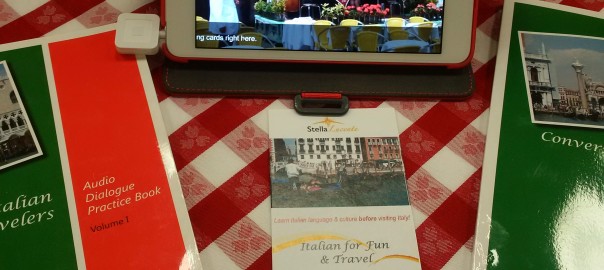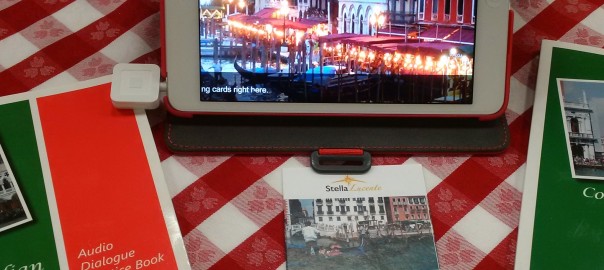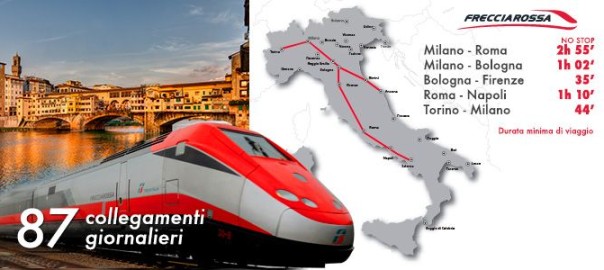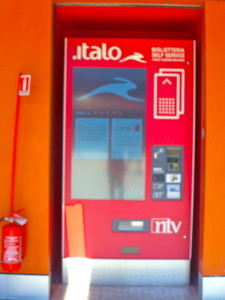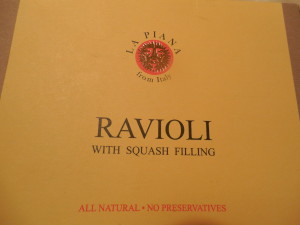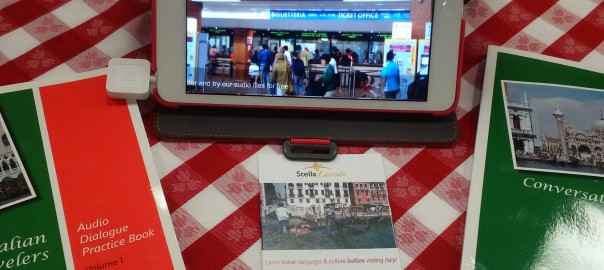Braciole: Italian Beef Rolls in Sauce for Sunday Dinner
Braciole: Italian Beef Rolls in Sauce for Sunday Dinner
Italian beef rolls— involtini di carne, also known as braciole, bracioli, or bruciuluni(in Palermo Sicilian dialect)—are a favorite southern Italian treat that are often served for the Sunday family dinner. What I enjoy most about this dish is that there are so many different variations, and every family that makes braciole has its own special traditional recipe. I’ve found that a little bit of breadcrumbs and prosciutto make for the most flavorful braciole. My family hides a whole hard-boiled egg in the center for a surprise when the braciole is cut open. Other families chop the egg in half or into smaller pieces, and some families do not use egg at all!
By the way, I am not sure of the origin of the word bracioleused here in America, but in Italy, braciolarefers to a cut of pork (usually grilled), and this dish can be made with pork cutlets. My friend Peter Palazzolo from the Speak Sicilian! Facebook group mentioned to me that long ago this rolled-up meat was cooked with grape vine twigs cured like coal, or bracia. But, I think my friend and Italian teacher Maria Vanessa Colapinto (blog: Eleganza per Me) , is correct with her idea that the real origin of this word comes from the Italian for the old-type grill that the rolled up meat for this dish was cooked on. This grill is still in use today and is called a “brace.”Meat cooked in this way is “all’abrace,”or “on the grill.”
A Note about Italian Tomato Sauce
When I was growing up, I always knew it was Sunday from the wonderful fragrance of the pot of homemade tomato sauce cooking on the stove top that would slowly permeate every corner of our house. If we couldn’t wait for the sauce to finish cooking, a slice of Italian bread dipped in the sauce would serve to keep our appetites at bay until mom or grandma deemed it was finally perfect.
Southern Italian tomato sauce is cooked at least an hour or so and usually longer when other meats are added to flavor the sauce. Every Italian family has its own special sauce that has been passed down for generations. I am including here the basic tomato sauce recipe from my family that I use to cook the braciole.
Most Italians use only a little basil in their tomato sauce and sometimes some parsley, and I have included both herbs in the tomato sauce recipe below. The Italian motto seems to be “the less the better” when it comes to tomato sauce, although the ingredients used must be high quality. Oregano is a herb not generally found in tomato sauce in Italy, although legend has it that American soldiers brought oregano home after World War II, and it seems like the American families here have adopted this additional herb for their sauce in many parts of the country.
Also, if good tomatoes or good tomato puree is used (with less acid), it is not necessary to add sugar to tomato sauce, but in some parts of America, a sweeter sauce is preferred. Growing up as I did in New York, we liked the Contadina brand of tomato products.
There are as many variations as there are families in Italy and America, so make the pot of sauce your family has come to love, and enjoy a special Sunday together!
Buon appetito! —Kathryn Occhipinti
Southern Italian Tomato Sauce
1 medium onion, chopped finely
1 clove garlic, chopped
2 Tablespoons olive oil
1 can (28 oz.) Contadina brand tomato puree or
chopped tomatoes
1 can Contadina brand tomato paste
1/4 cup dried parsley or
chopped fresh parsley leaves
1 Tablespoon dried basil or
2 Tablespoons torn fresh basil
1 Tablespoon of salt or
to taste
Optional meat: ground beef, Italian sausage, braciole
Heat the olive oil in a large pot and sauté the onions and garlic with a wooden spoon until softened.
Add the tomato puree, tomato paste, parsley, and basil to the same pot.
Add 2 cups of water.
Cover, bring the sauce to a boil, and then reduce heat to medium-low.
Simmer on medium-low heat with the lid partially covering the pot, stirring occasionally with a wooden spoon for at least 1 hour, so the sauce does not stick to the bottom of the pot and burn.
Cook for at least 1 hour; at least 1.5 hours if adding meat to the sauce. (Brown any meat in a separate skillet before adding it.)
Add additional water if the sauce becomes too thick, or cook for additional time with the lid of the pot off if the sauce becomes too thin.
Prepare the Braciole Beef Cutlets
Any thin, flat cut of beef stew meat can be used, such as top round. If you can, ask your butcher to cut the meat against the grain to make the thin cutlet slices, so that the meat will cook properly in the sauce and virtually melt in your mouth when it is done. At Caputo’s grocery stores in Chicago, the meat is nicely marbled and labeled “braggiola steak,” an Americanization of the original word, no doubt.

One package with four braciole cutlets, about 1.5 pounds for four people.
Lay the cutlets of meat out on a cutting board. Trim them to approximately the same rectangular size. Tenderize and flatten slightly with a meat mallet. Don’t omit this step, or your meat cutlet will be too small and stiff to roll properly!
Fill, Assemble, and Cook the Braciole –
For 4 Braciole, divide ingredients below evenly on each cutlet
4 hard boiled eggs, whole or halved (small eggs work best for whole)
1 cup fresh parsley leaves, stems removed, chopped coarsely
1 small onion, sliced thinly lengthwise
1/4 cup Provolone cheese or other sharp hard cheese
(Pecorino-Romano, Asiago), coarsely grated
1/2 cup breadcrumbs browned in olive oil
(flavor olive oil first with a finely chopped clove of garlic in the oil)
(Progresso brand Italian breadcrumbs or make your own!)
4 slices of Prosciutto (optional)
Other additions/substitutions: caciocavallo cheese, pancetta, ham, salami, mushrooms

Salt and pepper the cutlet. Place the egg and other ingredients desired onto the beef cutlet. (If you cannot find bracioleslices large enough in your grocery, you can overlap two pieces and they will cook together nicely after they are tied up, or use meat mallet to enlarge.)
Layer the ingredients as follows for each cutlet: optional slice of prosciutto, breadcrumbs, cheese, cup parsley, onion and and egg
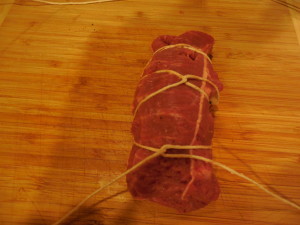
The braciole cutlet is rolled over the egg, with ends tucked in as you roll, and then tied with butchers twine. The ends also can be sealed with toothpicks. For more layers, roll along the short end; less layers, roll along the long end.
To see step-by-step pictures of the methods for rolling a braciola, go to Stella Lucente Pinterest .

Brown each assembled braciolain a little olive oil in a frying pan. Turn so they brown nicely on all sides.
Have sauce slowly boiling on the stove top. Gently lower the bracioleinto the sauce.
Lower heat to a simmer and cook about 30 minutes to 1 hour, or until cooked through. Do not overcook, or the meat will become dry.
While bracioleare cooking in the sauce, set a large pot of salted water on the stove to boil and cook spaghetti or another pasta of your choice. Time the pasta so that it is hot and ready to be sauced when the bracioleare done.
Remove the meat string or toothpicks before serving the braciole!
Serve with your favorite pasta and extra sauce on the side. Pasta used for the picture in this blog is Mafaldine 81 from Divella, made in Italy.
—Adapted from the cooking classes given by the Italian-American Society of Peoria, with special thanks to Rose M. Occhipinti

Available on amazon.com and Learn Travel Italian.com
Kathryn Occhipinti, MD, is the author of the
Conversational Italian for Travelers
series of books and a teacher of
Italian for travelers to Italy in the Peoria and Chicago area.
“Everything you need to know to enjoy your visit to Italy!”
Join my
Conversational Italian!
Facebookgroup
and follow me on
Twitter
at
StellaLucente@travelitalian1
and start to
learn Italian
today for
FREE
!
Conversational Italian! Facebook Group
Tweet @travelitalian1 for Stella Lucente Italian
YouTube videos
to learn Italian
are available from © Stella Lucente, LLC.
Learn Conversational Italian.
More information on and photographs of Italy can be found on
Facebook Stella Lucente Italian
and
Pinterest Stella Lucente Italian
.
Facebook Stella Lucente Italian
Pinterest Stella Lucente Italian
Visit
learntravelitalian.com/download.html
to purchase/download
Conversational Italian for Travelers
and find more interesting facts and helpful hints about getting around Italy!
Learn how to buy train tickets online, how to make international and local telephone calls, and how to decipher Italian coffee names and restaurant menus, all while gaining the basic understanding of Italian that you will need to know to communicate easily and effectively while in Italy. —From the staff at Stella Lucente, LLC
Braciole: Italian Beef Rolls for Sunday Dinner




